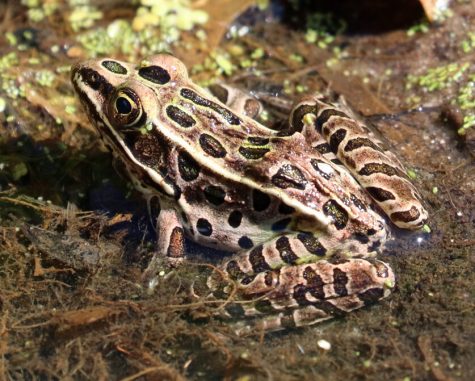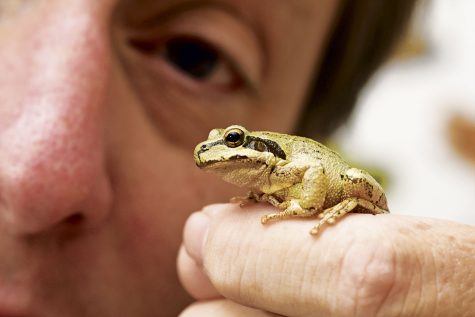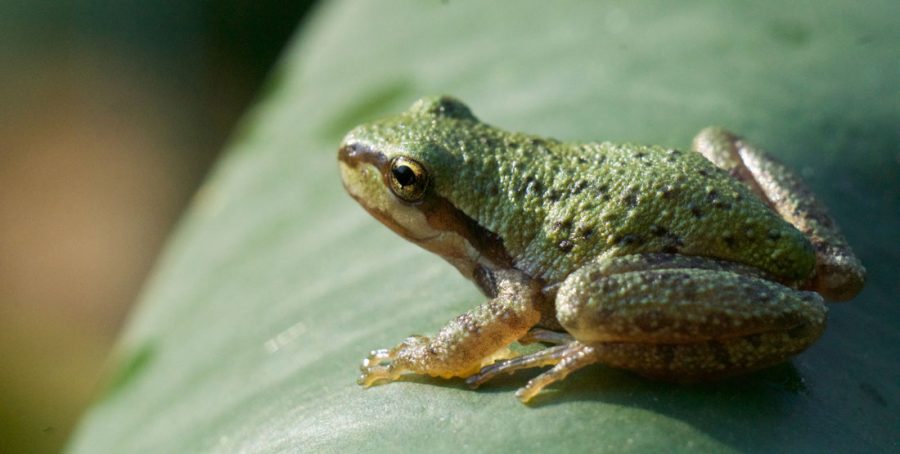Earth Day Special: Our Endangered Frogs
April 20, 2022
Tigers, pandas, elephants; these are all animals that we know and love. We understand their vulnerability to the increasing rates of extinction around the world, we all have felt the tug of the heartstrings in our chests when we come to the shocking reality that they might one day be gone.
But perhaps our gaze has been shifted too far.
Many people may not know the haunting tales of extinction that lay in the ponds of our backyard. While the world is all racing to save the magnificent sea turtles and graceful koalas, who is going to save our frogs?
The Northern Leopard Frog, Columbia Spotted Frog, Cascades Frog, Oregon Spotted frog. These are all endangered or threatened frog species in Washington. While frogs may not seem like a cause for concern, frogs are essential to a sustainable rainforest ecosystem. Frog diets almost always include a variety of insects, including mosquitoes. Yes, those pests that suck your blood and spread fatal diseases. Additionally, they serve as vital food sources for more influential predators, including birds, snakes, fish, and even wild canines and cats. As we all learned in our childhood, “it’s the circle of life.” Frogs are key to that circle.
Some distinct frog species are also helping with the studies to cure cancer, believe it or not. Poisonous frogs, like many venomous animals, have the potential to provide us with chemical compounds that can be used to make revolutionary medicines. One poison dart frog poison is being used as a effective painkiller, even rivalling morphine. Letting frogs die off would be not only harmful to the ecosystem, but to the future health of humans.

In the past, the Northern Leopard frog population was widespread across WA, they flourished in hundreds of rich habitats. But today, there is only one native population left in the whole state. Their population is declining at an alarming rate, and this extreme deterioration wasn’t addressed until 2006. Climate change and habitat destruction is on the rise, and being vulnerable amphibians, frogs are the main victim. Is it too late for species like the Northern Leopard Frog?
Thankfully, conservation efforts are increasing in Washington. The threats to frogs are being recognized, such as toxic substances that end up in their habitats and larger issues like global warming that changes the environment. If we want to save our frogs, our great whales and our giant polar bears, we must stop it all at the source.

This means being conscientious about what is put in our local ponds, swamps, and rivers. Frogs tend to absorb everything into their highly potent skin, so toxins that are foreign to them can be extremely damaging to their health. Even picking them up with bare hands can leave harmful abrasions on the frog’s skin, so handling wild frogs without proper care should be avoided. Pets and invasive species should also be kept in check; over 13% of deaths in 30 frog species are caused by cat attacks. To prevent this, cats should be spayed or neutered to avoid overpopulation of feral cats that hunt frogs and other vulnerable species (such as birds). And as we have been told for years, reducing individual carbon footprint is essential to all life, including ours. Being a responsible citizen can make all the difference in the fight to save precious wildlife.
Frogs may not be at the top of your list for important or cute animals, and that doesn’t have to change. There are hundreds of animals that need attention as extinction spreads around the globe. But to ensure the health of our Washington ecosystems, we need frogs.
Those small and slimy amphibians have a lot of pressure on them to manage this vast, green world.



